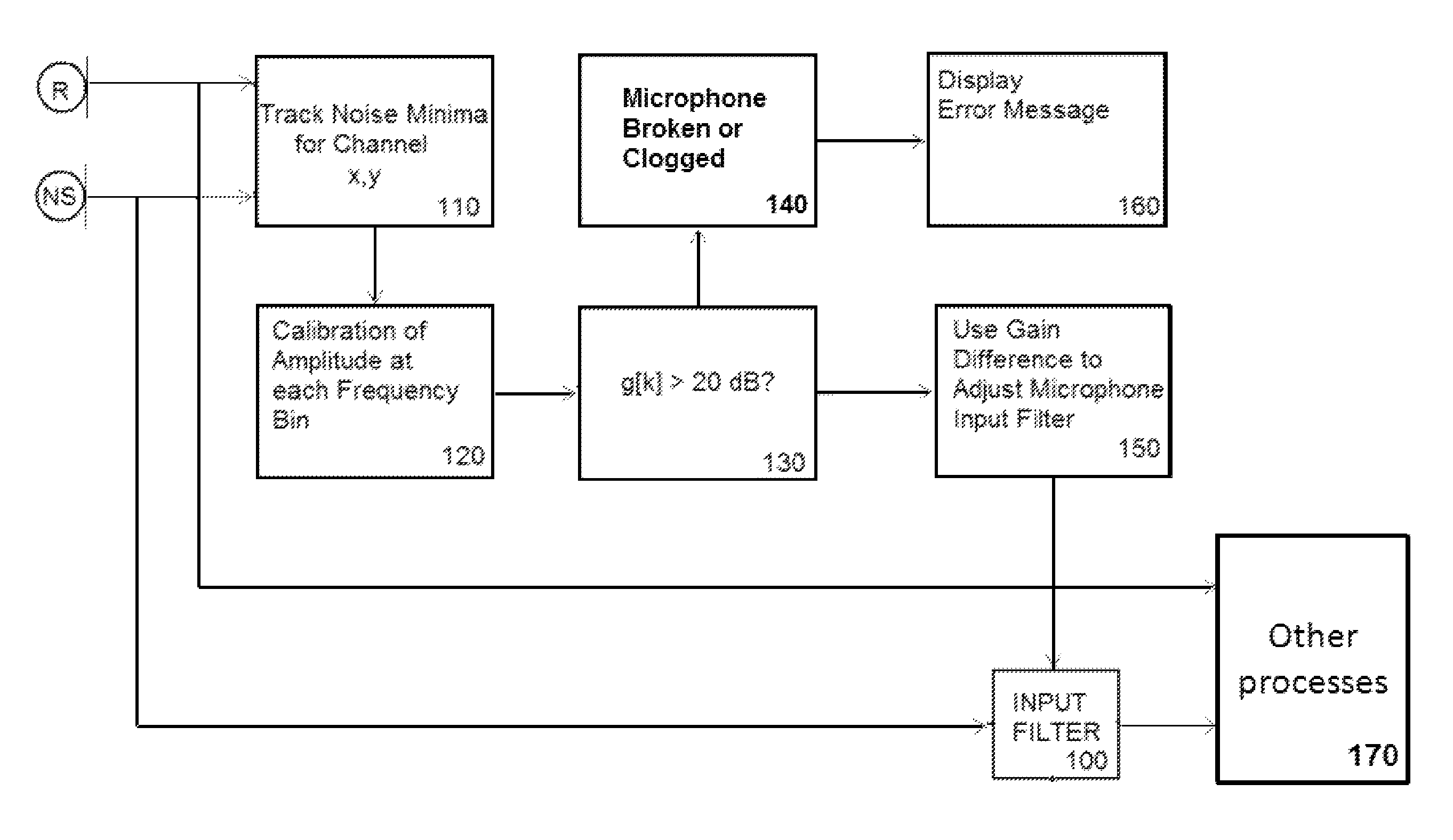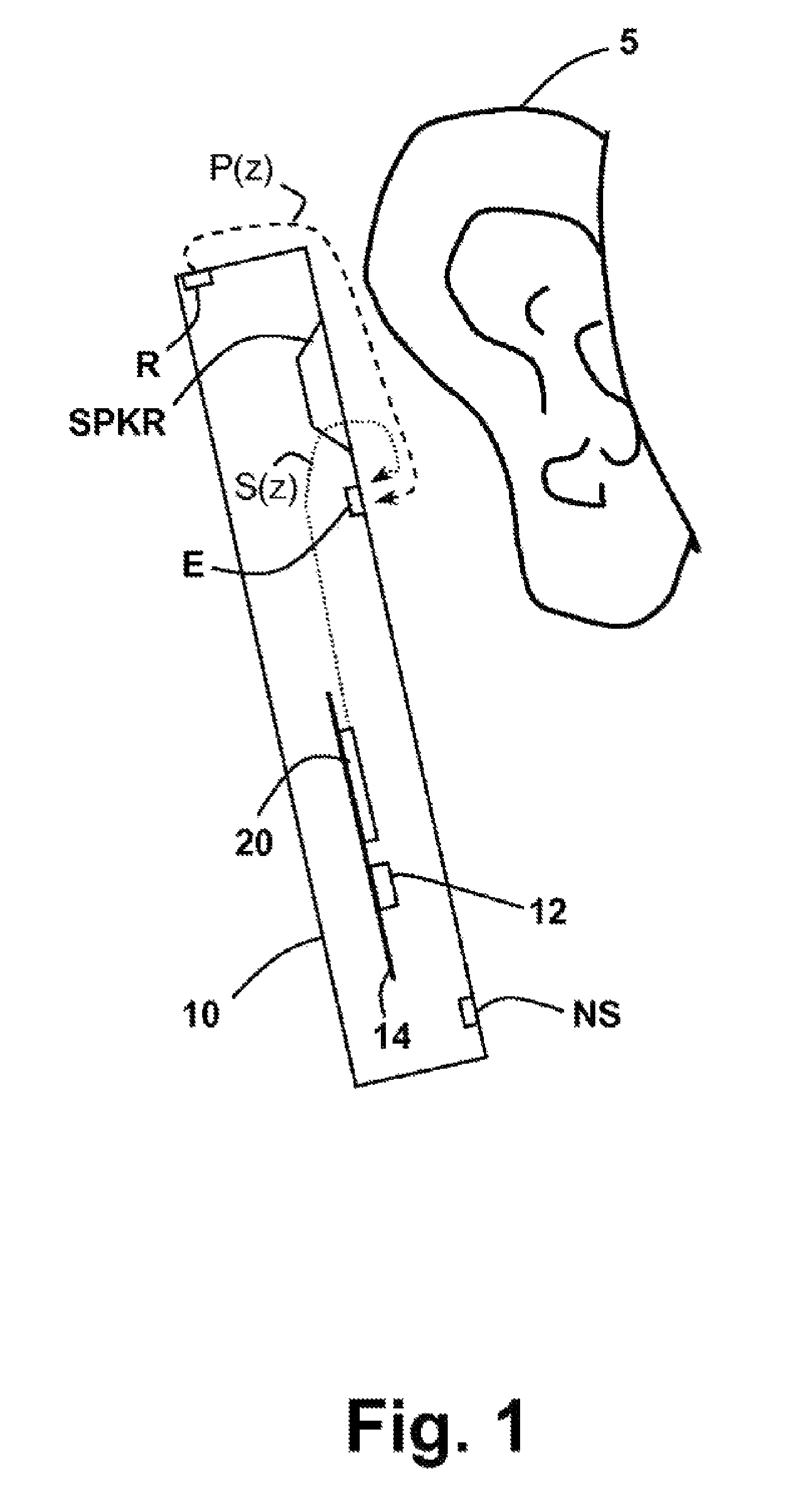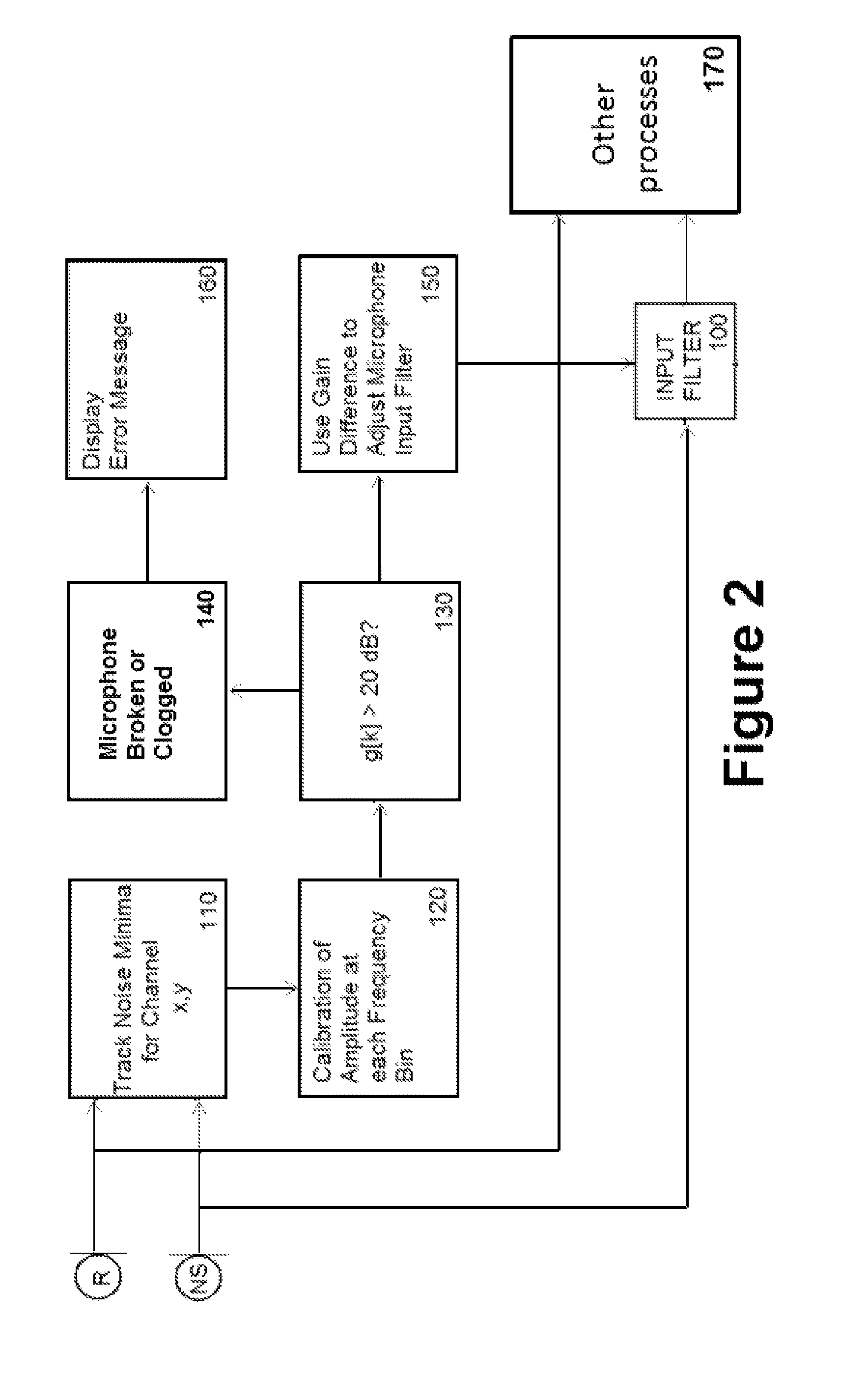Dual-microphone frequency amplitude response self-calibration
a frequency amplitude response and self-calibration technology, applied in the field of self-calibration system, can solve the problems of reducing robustness, loud buffeting noise, increasing failures in detecting situations,
- Summary
- Abstract
- Description
- Claims
- Application Information
AI Technical Summary
Benefits of technology
Problems solved by technology
Method used
Image
Examples
Embodiment Construction
[0019]Dual-microphone frequency amplitude response self-calibration is disclosed in the context of a two-microphone system, for example, using a near speech (NS) microphone for receiving a voice signal and a reference microphone (R) for measuring ambient noise for the noise cancellation circuit. However, dual-microphone frequency amplitude response self-calibration may be applied to other systems as well, including the three-microphone system disclosed in FIG. 1. In such a system, two microphones maybe calibrated relative to the third microphone, and two corrective gain adjustments made relative to that microphone. However for the purposes of the following discussion, only two microphones NS an R are assumed.
[0020]Referring to FIG. 2, in block 110 a noise minima tracker tracks noise minima for the calibration of the two microphones. Microphones R and NS, by way of example, may output audio signals in response to ambient noise and the like. The diagram of FIG. 2 has been simplified f...
PUM
 Login to View More
Login to View More Abstract
Description
Claims
Application Information
 Login to View More
Login to View More - R&D
- Intellectual Property
- Life Sciences
- Materials
- Tech Scout
- Unparalleled Data Quality
- Higher Quality Content
- 60% Fewer Hallucinations
Browse by: Latest US Patents, China's latest patents, Technical Efficacy Thesaurus, Application Domain, Technology Topic, Popular Technical Reports.
© 2025 PatSnap. All rights reserved.Legal|Privacy policy|Modern Slavery Act Transparency Statement|Sitemap|About US| Contact US: help@patsnap.com



